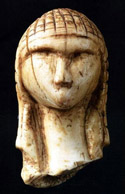Anthropology, Department of

Department of Anthropology: Faculty Publications
Document Type
Article
Date of this Version
11-2011
Citation
Journal of Hellenic Studies 131 (Nov 2011), pp. 301-302; doi: 10.1017/S0075426911001169
Abstract
Clairmont’s book is a selection of letters addressed to Louis-François-Sébastien Fauvel, the French Consul and antiquarian, who lived in Athens from 1803 to 1822. Fauvel came to Greece for the first time in 1780. He was sent to the Orient by Count Choiseul-Gouffier in order to study, draw and acquire antiquities for Choiseul’s collection. In 1784 Choiseul-Gouffier was appointed Ambassador in Constantinople and Fauvel continued his activities as a member of Choiseul’s retinue until 1792. Subsequently, Fauvel held the position of French Consul in Athens from 1802 until 1833. With the outbreak of the War of Independence, Fauvel left Athens and moved to Smyrna, where he lived until his death in 1839. In Athens, Fauvel stayed at the Convent of the Capuchins and, after 1804, at the French Consulate, located near the gate of the Roman Agora. In 1810 he built a new, elaborate house, in the vicinity of the ancient Agora. His collection of antiquities was displayed at this house, which was depicted by Dupré in 1819. His residence, considered as the first Athenian museum, became a meeting place for European artists, architects, archaeologists, historians, philologists and topographers. Fauvel provided hospitality and information to many visitors from France, Britain, Germany and Denmark, as his correspondence attests.
The correspondence covers the period from 1786 to 1837 and is preserved in the Bibliothèque Nationale in Paris. These letters are addressed to Fauvel; very few are written by him. As the editor explains, the letters selected for publication are of intrinsic interest to archaeologists and classical scholars. They form only a small part of ‘the vast amount of Fauvel’s unpublished letters in the Bibliothèque Nationale’. Earlier works, such as Fauvel’s biography, published by Legrand in 1897, included excerpts of Fauvel’s correspondence. However, this is the first comprehensive publication dedicated to this important archival material. The editorial work of Clairmont and von Gonzenbach is excellent. The letters are presented in chronological order and grouped by correspondent; biographical information is provided for each correspondent and extensive footnotes identify the individuals, places and events mentioned in each letter.
Included in
Ancient History, Greek and Roman through Late Antiquity Commons, Ancient, Medieval, Renaissance and Baroque Art and Architecture Commons, Classical Archaeology and Art History Commons


Comments
Copyright © The Society for the Promotion of Hellenic Studies 2011; published by Cambridge University Press. Used by permission.